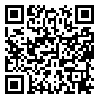Download citation:
BibTeX | RIS | EndNote | Medlars | ProCite | Reference Manager | RefWorks
Send citation to:



BibTeX | RIS | EndNote | Medlars | ProCite | Reference Manager | RefWorks
Send citation to:
Khaki I, Eskandari N, Ahmari tehran H, Bakouie S, Jafarbegloo E, Khalajinia Z, et al . Determining and Prioritizing the Educational Needs of Midwives. Iranian Journal of Medical Education 2020; 20 :298-309
URL: http://ijme.mui.ac.ir/article-1-5032-en.html
URL: http://ijme.mui.ac.ir/article-1-5032-en.html
Imaneh Khaki 

 , Narges Eskandari *
, Narges Eskandari * 

 , Hoda Ahmari tehran
, Hoda Ahmari tehran 
 , Sareh Bakouie
, Sareh Bakouie 
 , Esmat Jafarbegloo
, Esmat Jafarbegloo 
 , Zohreh Khalajinia
, Zohreh Khalajinia 
 , Marzieh Raisi
, Marzieh Raisi 
 , Nahid Mehran
, Nahid Mehran 
 , Fatemeh sadat Mousavi
, Fatemeh sadat Mousavi 
 , Hanieh Rahimi
, Hanieh Rahimi 



 , Narges Eskandari *
, Narges Eskandari * 

 , Hoda Ahmari tehran
, Hoda Ahmari tehran 
 , Sareh Bakouie
, Sareh Bakouie 
 , Esmat Jafarbegloo
, Esmat Jafarbegloo 
 , Zohreh Khalajinia
, Zohreh Khalajinia 
 , Marzieh Raisi
, Marzieh Raisi 
 , Nahid Mehran
, Nahid Mehran 
 , Fatemeh sadat Mousavi
, Fatemeh sadat Mousavi 
 , Hanieh Rahimi
, Hanieh Rahimi 

Qom University of Medical Sciences , neskandari@muq.ac.ir
Abstract: (3310 Views)
Introduction: Assessing educational needs and planning can be a positive step towards improving the quality of midwifery services. This study was conducted to determine the educational needs of midwives in line with responsive midwifery education in Qom, Iran.
Methods: This exploratory mixed-method study consisted of two parts, a qualitative study (content analysis) with the aim of determining educational needs, and a quantitative study (description cross sectional method) with the aim of prioritize educational needs. Initially, the educational needs of midwifery students were determined based on experiences and views of midwives, instructors, and midwifery faculty members. In the same vein, participants were selected by purposeful sampling method. To collect data, a semi-structured questionnaire was used. Educational needs were extracted and categorized through qualitative content analysis. Then, using Delphi technique and relying on the opinions of the faculty members of the midwifery department, educational needs were prioritized. MAXQDA was used to manage data in qualitative section. Data description (mean scores and agreement rate) in quantitative study was conducted manually.
Results: Thirty nine midwives responded questions in qualitative section. Views of experts were analyzed by content analysis method and categorized in 289 codes, 73 categories, and 13 main categories. In quantitative section, the highest priority (score 5) were devoted to these subjects: requesting and interpreting practical midwifery tests, fetal health assessment, prescription, perinatal care, hemorrhage, preeclampsia, neonatal examination, physiological delivery, client communication, peer communication, patient communication, professional ethics, and patient safety. The experts' agreement ratio was 84 percent in second round of Delphi.
Conclusion: Findings of the study revealed that due to various educational needs of midwives, to enable midwifery student to response to social expectations attention to these subjects during student training and holding workshop with supplementary courses are suggested.
Methods: This exploratory mixed-method study consisted of two parts, a qualitative study (content analysis) with the aim of determining educational needs, and a quantitative study (description cross sectional method) with the aim of prioritize educational needs. Initially, the educational needs of midwifery students were determined based on experiences and views of midwives, instructors, and midwifery faculty members. In the same vein, participants were selected by purposeful sampling method. To collect data, a semi-structured questionnaire was used. Educational needs were extracted and categorized through qualitative content analysis. Then, using Delphi technique and relying on the opinions of the faculty members of the midwifery department, educational needs were prioritized. MAXQDA was used to manage data in qualitative section. Data description (mean scores and agreement rate) in quantitative study was conducted manually.
Results: Thirty nine midwives responded questions in qualitative section. Views of experts were analyzed by content analysis method and categorized in 289 codes, 73 categories, and 13 main categories. In quantitative section, the highest priority (score 5) were devoted to these subjects: requesting and interpreting practical midwifery tests, fetal health assessment, prescription, perinatal care, hemorrhage, preeclampsia, neonatal examination, physiological delivery, client communication, peer communication, patient communication, professional ethics, and patient safety. The experts' agreement ratio was 84 percent in second round of Delphi.
Conclusion: Findings of the study revealed that due to various educational needs of midwives, to enable midwifery student to response to social expectations attention to these subjects during student training and holding workshop with supplementary courses are suggested.
Type of Study: Original research article |
Subject:
other
Received: 2020/02/6 | Accepted: 2020/08/31 | Published: 2020/11/30 | ePublished: 2020/11/30
Received: 2020/02/6 | Accepted: 2020/08/31 | Published: 2020/11/30 | ePublished: 2020/11/30
Send email to the article author
| Rights and permissions | |
 |
This work is licensed under a Creative Commons Attribution-NonCommercial 4.0 International License. |


